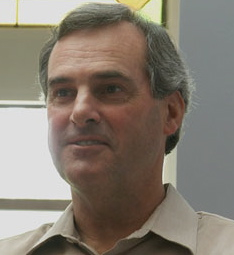Sean Reily: Mid-year report

In the (near) paperless world of the future, reading from an electronic screen has long been hypothesized as the method through which readers will receive the bulk of their printed news and information.
To augment this electronic news consumption, it has also long been hypothesized that optimizing the E-reading experience through the technology of E-Reader devices and the packaging of curated content with navigation more like paper publications than the search and click process of the web, might lead to a new mass delivery platform for news providers.
After many tried and shelved attempts over the past two decades, these hypotheses proved themselves with merit in 2007 with the launch of Amazon’s E-Reading device “Kindle.” Designed primarily for reading books, a handful of very minimum newspaper E-Reader editions were included on the Kindle. The result: an estimated more than one million Kindles, with 2.1 million E-Readers altogether have been sold in the U.S. to date. With that, an estimated more than 100,000 newspaper subscriptions have been sold, a number that has been steadily growing.
This initial E-Reader success got the attention of virtually every major competitor and/or electronics manufacturer in the field, so much so, that in the next twelve months consumers will see wireless E-Reader device or store launches, inclusive of newspaper editions, from SONY, Barnes & Noble, PlasticLogic, IRex and Hearst, with Apple, Samsung, Microsoft and many others reportedly in development and waiting in the wings.
For news creators this could prove to be the golden opportunity of a new mass delivery platform, or it could become the same kind of lost opportunity the internet has become, where traditional news providers post content and gather readers, but have no effective, substantial way to monetize the readership.
What makes the E-Reader scenario even more challenging is that following the success of Apple with iTunes, manufactures like SONY are now no longer content to build devices for content creators to broadcast over. They, like all E-Reader manufacturers, now want and expect to own the E-Reader store, the customer and customer relationship and the advertising associated with E-Reader editions, thus blocking the news creators from much of their traditional revenue streams.
With all the above in mind, I have spent the first portion of my fellowship personally meeting and developing working relationships with the E-Reader development teams at SONY, Barnes & Noble, IRex, Hearst, Libre Digital, New York Times, Wall Street Journal, Gannett, Washington Post, Los Angeles Times, NAA, and Adobe and phone conferencing with Amazon, Apple, Microsoft, Olive, Chicago Tribune, Baltimore Sun and Time Inc.
The topics I’ve been meeting on are verifying and discussing current and alternative advertising, E-Store and customer ownership beliefs; the economics of production, pricing and revenue shares; the optimum technical paths for E-Reader editions from current newspaper content streams; the future advertising sales and production process and E-Reader consumer research.
What I’ve learned is a very in-depth knowledge of all these aspects of the E-Reader/Newspaper world, so that I can confidently say I am fluent in the topic and ready to utilize that knowledge in business development and the documentation of that.

Comments